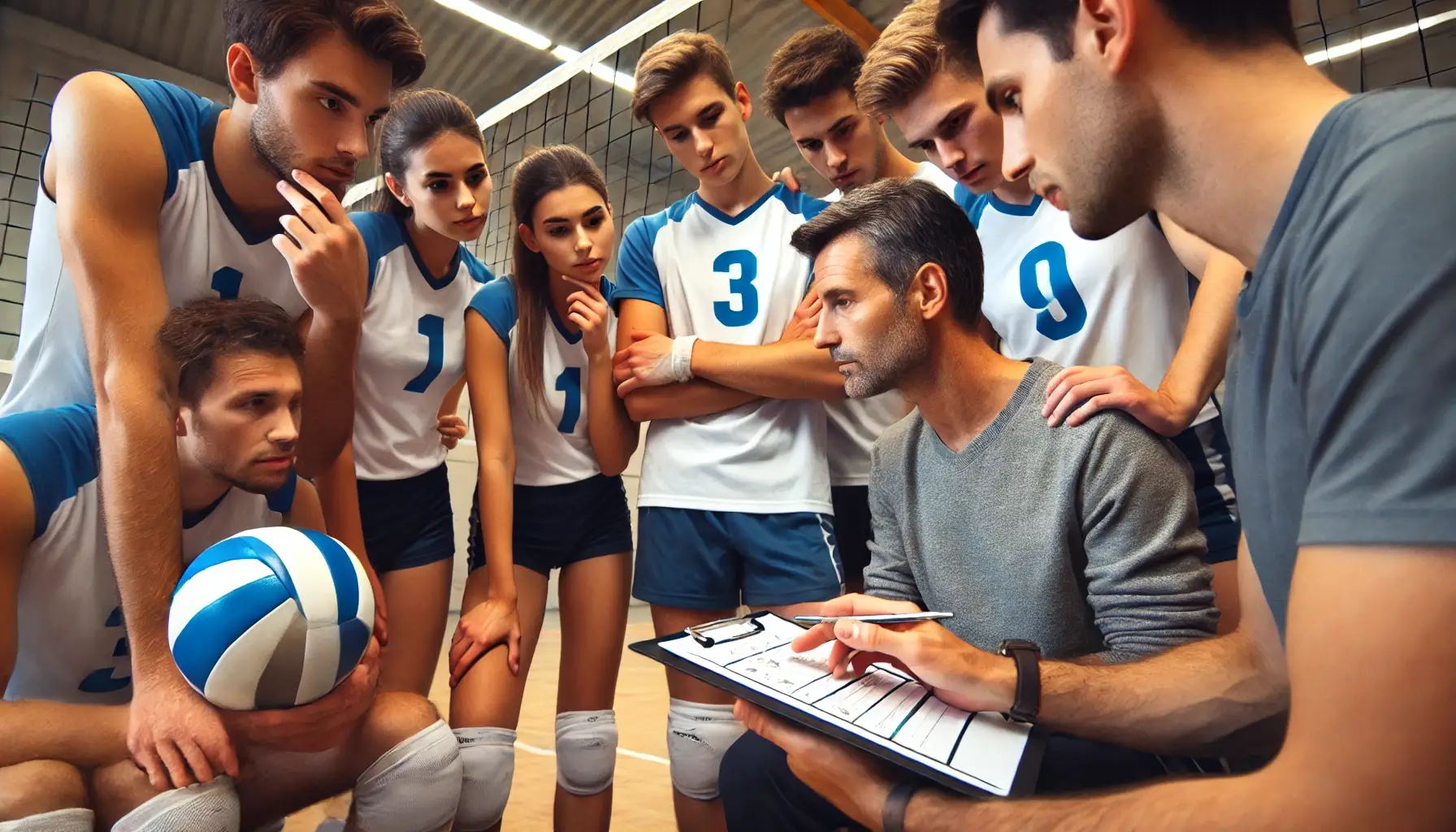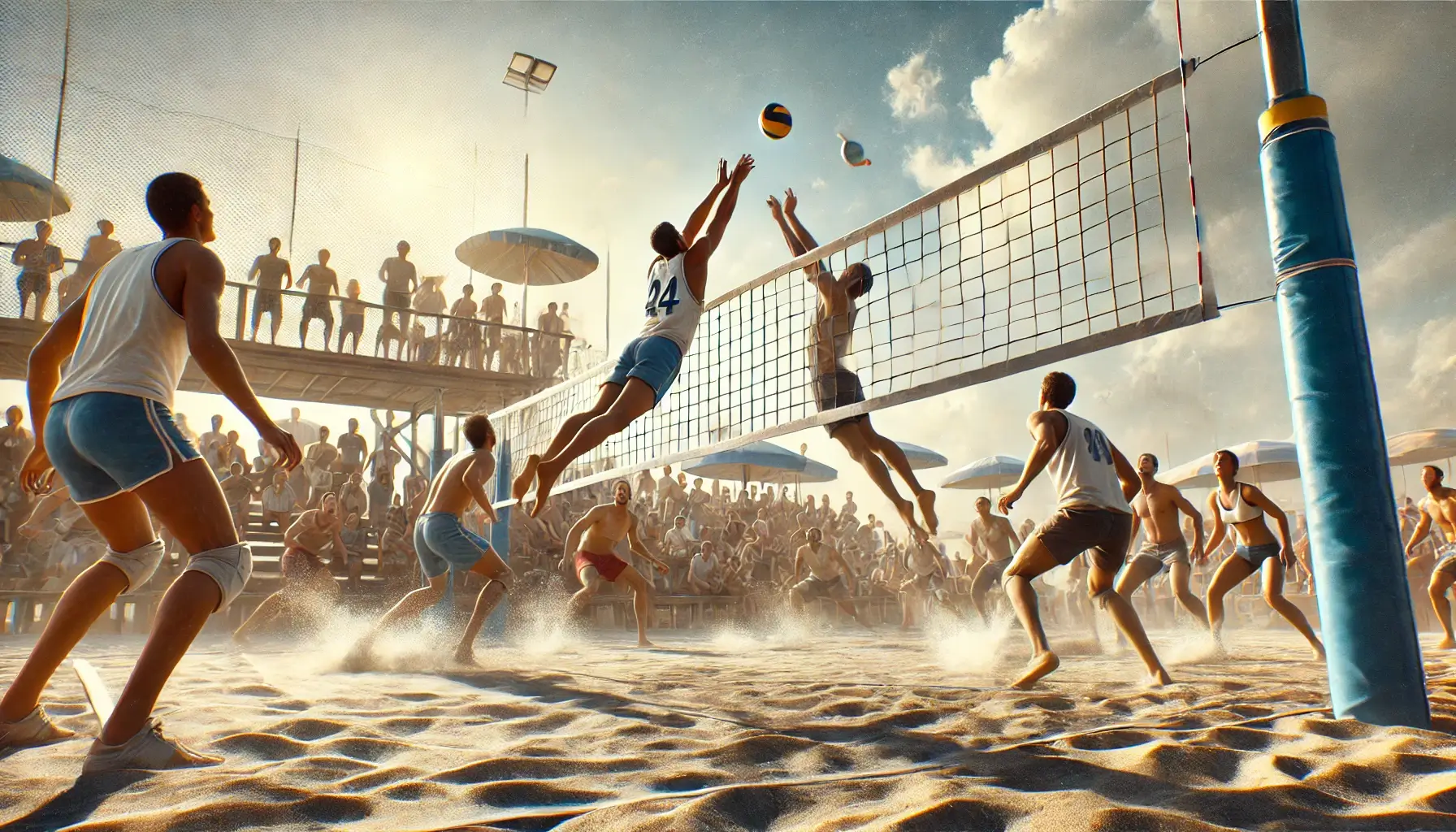Effective Volleyball Goal Setting for Teams: A Coach's Guide

Introduction

Setting goals is a crucial aspect of volleyball, guiding players and teams toward improved performance and success. By establishing clear and achievable targets, athletes can focus their efforts, measure progress, and stay motivated throughout the season.
This article will delve into the importance of goal setting in volleyball, exploring its benefits for individual players and teams. We will discuss how to set specific goals, the key components of effective goal setting, and how coaches can support their players in achieving their targets. Additionally, we'll provide practical examples and worksheets to aid in the goal-setting process.
Why is Goal Setting Important in Volleyball?
Benefits for Volleyball Players
Setting goals in volleyball offers several benefits for players. First, it enhances skill development and performance. By focusing on specific targets, players can work on improving their techniques and strategies. Personal growth and motivation are also key benefits, as achieving goals regularly boosts confidence and commitment.
For further guidance on goal setting, visit Getthepancake.com.
How Goals Enhance Team Performance
Goals are not just beneficial for individual players but also crucial for team performance. They improve team cohesion and communication, aligning individual efforts towards common objectives. When each team member knows what is expected, it creates a more harmonious and effective team dynamic.
For more on performance goals, see this article on Goalsetting.online.
Examples of Successful Goal Setting in Volleyball
Successful volleyball teams often share a common trait: effective goal setting. Real-world examples show that teams who set and achieve specific goals tend to perform better and have stronger team dynamics. Goals in volleyball can range from winning a certain number of matches to improving specific skills.
For more examples of successful goal setting in volleyball, refer to Goalsetting.online.
How to Set Specific Goals for Your Volleyball Team
Identifying Team's Strengths and Weaknesses
To set effective goals for your volleyball team, start by identifying the team's strengths and weaknesses. Conducting a SWOT analysis (Strengths, Weaknesses, Opportunities, and Threats) helps you understand where your team excels and where improvements are needed. Here's how to get started:
- Strengths: Identify what your team does well. This could include strong serving techniques, excellent team cohesion, or standout players. Recognizing strengths allows you to build on these areas to enhance overall performance.
- Weaknesses: Determine areas that need improvement. These could be inconsistent defensive strategies, poor communication, or lack of experience. Addressing weaknesses is crucial for balanced progress and preventing issues that could lead to frustration.
Steps to Conduct a SWOT Analysis:
- Gather Data: Collect performance data from recent matches and practices. Include feedback from players and coaches.
- Analyze: Look for patterns in performance. Identify consistent strengths and recurring weaknesses.
- Prioritize: Focus on areas that need immediate attention. This helps in setting specific goals that are crucial for team development over the next three months.
Setting Measurable and Achievable Goals
It's essential to set SMART goals: Specific, Measurable, Achievable, Relevant, and Time-bound. These types of goals help in measuring progress accurately and staying focused on what's important. For example, aim to improve your team's serve reception rate by 10% over the next month. Setting these goals with your volleyball team ensures that each player understands how to set goals that contribute to the overall success of the team.
Coaches play a vital role in goal setting for volleyball teams. By guiding players in setting the right goals and monitoring their progress, coaches can ensure that individual efforts align with team objectives. This approach enhances team bonding and fosters a supportive environment where every volleyball player can improve their skills and strive to achieve their goals.
For more insights on setting measurable and achievable goals, visit Theartofcoachingvolleyball.com.
Incorporating Time-bound Goals
Goals should be time-bound to keep the team on track. Differentiate between short-term and long-term goals and align them with your season schedule. This ensures that goals are realistic and can be adjusted as the season progresses. Here are some examples of time-bound goals:
Short-term Goals:
- Improve serve accuracy by 5% in the next two weeks.
- Increase team communication during matches by conducting weekly team-building exercises.
- Enhance defensive skills with additional drills in the next month.
Long-term Goals:
- Win at least 70% of the matches this season.
- Develop a new offensive strategy by mid-season.
- Ensure every player reaches a specific fitness level by the end of the season.
What are the Key Components of Effective Goal Setting in Volleyball?

Personal vs. Team Goals
Balancing personal goals with team objectives is essential for a successful volleyball team. Players should be encouraged to set personal goals that align with the team's overall aims. This approach ensures individual growth contributes to the team's success and helps in achieving team goals. Coaches play a crucial role in guiding players to understand how to set goals that benefit both themselves and the team. This alignment fosters a supportive team environment and enhances overall performance on the volleyball court.
Short-term vs. Long-term Goals
Both short-term and long-term goals play important roles in volleyball. Short-term goals, such as improving a specific skill within a few weeks, provide immediate targets to keep players motivated. Long-term goals, like winning a championship, offer a larger vision to work towards. Here are some examples:
Short-term Goals:
- Increase the number of successful blocks in the next three games.
- Enhance team coordination during drills over the next month.
Long-term Goals:
- Achieve a top-three finish in the league by the end of the season.
- Develop and implement a new play strategy by mid-season.
The Role of a Coach in Goal Setting
Coaches play a critical role in facilitating effective goal setting. They should guide players in setting realistic goals, monitor progress, and provide support and feedback. Here are some techniques for coaches:
- Regular Progress Reviews: Conduct frequent check-ins to assess how players are advancing towards their goals.
- One-on-one Meetings: Hold individual sessions with players to discuss their goals, provide feedback, and adjust targets as necessary.
- Adapting Goals: Be flexible and ready to modify goals based on performance and changing circumstances.
For more information on coaching techniques for goal setting, refer to Volleyballhubpro.com.
How to Utilize Goal Setting Worksheets for Volleyball?
Creating Customized Worksheets
Creating goal setting worksheets tailored to volleyball can significantly enhance your team's performance. Here are steps to create effective worksheets:
- Identify Objectives: Clearly define the goals you want to achieve.
- Break Down Goals: Divide the main goals into smaller, manageable tasks.
- Set Deadlines: Assign specific time frames for each task.
- Track Progress: Include sections for tracking progress and reflecting on achievements.
Examples of Goal Setting Worksheets
Detailed worksheets can help players focus their efforts during practice and games. For instance, a worksheet might include columns for the goal, specific tasks, deadlines, and progress notes. This structured approach ensures players stay on track and can see their improvement over time.
Tracking Progress with Worksheets
Monitoring and evaluating progress is crucial for effective goal setting. Use worksheets to regularly check on the team's progress and make necessary adjustments. This helps in maintaining motivation and ensuring continuous improvement.
For more insights on tracking progress, explore Jvavolleyball.org.
How Can Coaches Help Players Achieve Their Goals?

Developing Personalized Goal Plans
Creating individual goal plans for players is essential for aligning personal goals with team objectives. Each player should have a tailored plan that considers their strengths, weaknesses, and areas for improvement. Personalized goal plans help in keeping players focused and motivated.
Monitoring and Adjusting Goals
Regular check-ins and feedback sessions are crucial for monitoring progress and adjusting goals. Coaches should hold consistent meetings with players to discuss their achievements and challenges. Adjusting goals as the season progresses ensures they remain relevant and achievable.
Motivational Techniques for Volleyball Players
Keeping players motivated throughout the season is vital for maintaining performance levels. Coaches can use various techniques to keep players engaged:
- Positive Reinforcement: Acknowledge and reward achievements to boost morale.
- Team-building Activities: Foster a strong team spirit through regular team-building exercises.
- Clear Communication: Ensure players understand their roles and the team's goals.
By implementing these strategies, coaches can help their players stay focused and motivated throughout the season.
What are Common Challenges in Volleyball Goal Setting?
Overcoming Obstacles in Goal Achievement
Goal setting in volleyball comes with its own set of challenges. Common obstacles include lack of motivation, injuries, and team conflicts. To overcome these challenges:
- Stay Flexible: Adjust goals as needed to accommodate unexpected changes.
- Maintain Focus: Keep the team focused on the end goals despite setbacks.
- Encourage Resilience: Foster a resilient mindset to push through difficult times.
Maintaining Motivation Throughout the Season
Keeping the team motivated can be challenging, especially during the ups and downs of the season. Here are some tips:
- Regular Recognition: Celebrate small victories to keep spirits high.
- Consistent Feedback: Provide constructive feedback to help players improve continuously.
- Team Bonding: Engage in activities that strengthen team unity and support.
Adapting Goals to Changing Team Dynamics
Team dynamics can change due to new members or evolving situations. It is important to adapt goals to reflect these changes:
- Regular Reassessment: Periodically reassess goals to ensure they remain relevant.
- Incorporate New Players: Integrate new team members into the existing goal structure.
- Flexibility: Be willing to modify goals as the team's needs change.
For more insights on adapting goals to team dynamics, refer to Javelinsportsinc.com.
Conclusion

Setting goals for volleyball is a crucial part of achieving success in the sport. Whether you're coaching volleyball, playing in high school volleyball, or participating in drop-in volleyball, setting and achieving these goals can significantly impact your skill level and performance. Effective team goal setting involves both personal and team objectives, ensuring that each player's goal aligns with the overall aims of the team.
Understanding the art of setting specific objectives and breaking them down into smaller goals can help every team make significant progress. Coaches and players should focus on setting long-term goals and regularly adjusting them to address any challenges along the way. For example, improving serving techniques or enhancing defensive strategies within two months can lead to substantial improvements.
Achieving a goal not only boosts the morale of the team but also helps in developing a great team dynamic. Coaches should conduct drills tailored to individual needs three times a week to ensure continuous improvement. Setting those goals and achieving them requires dedication and regular practice, but the rewards are well worth the effort.
Ultimately, goals can help players and coaches navigate the complexities of volleyball, making it possible to enjoy the process and achieve success in volleyball. By focusing on specific objectives and consistently working towards them, teams can overcome obstacles and reach their full potential.
FAQs
How do you set goals for a volleyball team?
Setting goals for a volleyball team involves identifying clear objectives, breaking them down into achievable tasks, and setting deadlines. Goals should be aligned with the team's strengths and areas needing improvement.
For more detailed information on setting volleyball goals, visit Goalsetting.online.
What are good goals for a volleyball team?
Good goals for a volleyball team include improving specific skills, such as serve accuracy or defensive tactics, achieving a certain number of wins, and enhancing team coordination and communication.
How can goal setting improve volleyball performance?
Goal setting improves volleyball performance by providing clear targets, maintaining focus, and tracking progress. It helps players and teams stay motivated and work towards continuous improvement.
For more on performance goals, check out Goalsetting.online.
What role does a coach play in goal setting for a volleyball team?
Coaches guide players in setting realistic goals, monitor progress, and provide feedback and support. They play a critical role in ensuring that goals are aligned with team objectives and are achievable.
For more on coaching and goal setting, visit Goalsetting.online.
How often should volleyball team goals be reviewed?
Volleyball team goals should be reviewed regularly, ideally after each game or practice session. Frequent evaluations help in making necessary adjustments and keeping the team on track towards their objectives.